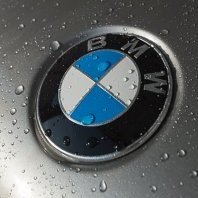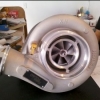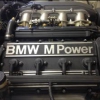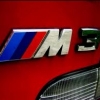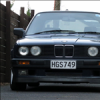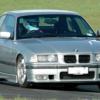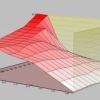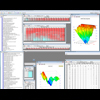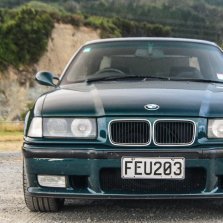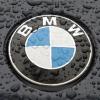Leaderboard
Popular Content
Showing content with the highest reputation on 04/28/16 in all areas
-
3 pointsHad a Tesla Model S for the weekend. Went on a road trip up to a massive cars and coffee meet (2000-2500 cars). Tesla is amazing. Loved every bit of it. From the Auto Drive feature to the always there torque. Didn't miss an exhaust note the entire drive. 200+ miles to a charge. Charges for free in about 45mins to an hour at well placed stations. We did about 470miles and 80% of that it drove itself. I just sat there looking around. Was strange. Would happily own one as my daily driver. And the petrol burner for the track only.
-
2 pointsDon't think m3 badges on a look alike is cool. Nice looking car, lots of work done but not an m3...
-
2 pointsIf anyone is seriously looking to get one... Go for the ones with the two flagpole holders on the front!
-
2 pointsLooks aside I think it's essential that you have a rear bumper or diffuser, as it is the air will be hella dirty around there which will undermine or even upset your new wing. A diffuser will shift your balance even further back so, unless you run an aggressive front splitter, a rear bumper of some sort would be the better choice.
-
2 points
-
2 pointsI had the B&D orange thing, 100mm. Recently shat itself after 25years the piece of crap. So bought another one! $70 odd from memory. Exactly the same as the old one. If it aint broke etc...
-
2 points
-
2 pointsJust realised this could do with a wider audience... http://bimmersport.co.nz/topic/55870-anyone-have-supercheap-axle-stands/#entry602526
-
2 points
-
2 points
-
1 pointForgotten glory and long list of problems. Sad to see in this condition. http://www.trademe.co.nz/Browse/Listing.aspx?id=1076751657 Would be a good project for someone with plenty of time (not me).
-
1 pointI've been finishing off the last few jobs over the last couple of days. Most of the wiring is now tidied up. The electric fan is wired in and I got it working on the factory radiator switch. It's still not quite as tidy as I'd like but it will do for now. I also have a few small issues to sort. One being that the car doesn't really idle. It keeps dying if you let off the gas when coming to a stop and when I unplug the ICV, nothing changes. I think when it was in the e34, the throttle cable was just adjusted to not return the throttle fully, keeping it idling. I have also done this for now as a temporary solution until I figure out what's going on. I also have my suspicions that the TPS is not working. I get no readings on any of the pins and any point, so might swap it out for my one on the Eta which was new. My other issue is 2 days ago the car wouldn't start without being jump started by another car. I charged the battery and my jumper pack but it only worked for the first 2 starts and then didn't again, and my jumper pack can't jump it either. I have a feeling my ground for the battery isn't good enough, will investigate this tonight. It kind of renders the car useless if I need another to go along with me everywhere, hahaha.
-
1 pointjeez, you had a mitsubishi that lasted more than 5 years? sorry, my bias. IMHO they use complex solutions to problems other manufacturers (such as Toyota or Nissan) solve with ease, though they fail at ten years. Case in point: white metal bearings for the balance shafts in 4G63 & G63B, they seize and shred the belts. Porsche & BMW execute balance shafts without issue. Oil burning like a tanker at 10-12years, it's pretty rare to see a 12 year or older Mitsi on the road. /rant. sorry, perhaps I shoulda put this one in the quick rant thread!? #8 )
-
1 pointSpend some more time adjusting gearbox tune, shift points on my BMW er, Toyota Better, bit more chilled out at certain throttle points.
-
1 point
-
1 pointDid a thermostat replacement for one that was stuck open in the old family mitsi wagon. It'd been like that for 5 years+. Immediately sprang about six different coolant leaks. Bit of a rabbit hole sometimes.
-
1 pointbefore you post stupid comments you should really research what you are complaining about.
-
1 pointI'm using motorsport springs and koni adjustables - have had them for 10 years and still good. Stocks are ultra expensive for konis, got mine from Demon Tweeks in the UK with springs for less than Stocks damper only price. Just checked DT's price - a set (without shipping etc.) is $891.38. If you want it to behave on the road and not ground out at the front all the time, keep to Msport springs. I have finally returned to the Chapman idea - soft springs and stiff dampers. Seems to work.
-
1 pointstaying power is important. you know, if you want to, like, continue enjoyment. on the track, and all.
-
1 point
-
1 pointMaybe try SDEuro at Horotiu. They were good enough to let me try another module one day when I was trying to work out my ABS issues. In the end aftr replacing both rear sensors and eliminating the module I ended up letting them sort it - I think they just ended up cleaning up some harnesses and it was all good.
-
1 point
-
1 pointMeyle used to be great. Have read that they moved the manufacturing from Europe to China and the quality has dropped since then. I don't agree with sweeping statements that Chinese products are crap but I do believe that companies that focus on reducing production costs to maximise profits will face quality issues. Either way, a poked bushing after less than 4000kms is plain rubbish.
-
1 point
-
1 pointDon't buy Meyle parts! This after less than 4000 kms! Lucky everything else I replaced front and rear apart from the lower control arms was Lemfoerder! And, of course, it's one of the parts in the front suspension that a] is not shared with any other model and b] doesn't have a replaceable bushing. Now trying to get a warranty replacement... From a company in Germany. 4-6 weeks minimum if they agree. 6 weeks for BMW NZ to get a Lemfoerder replacement (at massive cost). Ebay probably my best bet - quicker and cheaper.
-
1 pointI love it .. looks seriously agressive and you have already done the lowering etc to support the look. I actually think you have a go at making your own bumper setup with rear diffuser. Leave the rear bumper stock and get some glass one made up (Dutchy can do this if you have a the part to copy (which you do) ) That way you can do a diffuser into the back. EG this direction
-
1 point
-
1 point
-
1 point
-
1 point
-
1 pointFirst guy that actually came to see and drive it bought it. Sent from my GT-I9506 using Tapatalk
-
1 point
-
1 point
-
1 point
-
1 pointIt has been a while, no major changes. Been busy with other things also car is my daily driver so progress is somewhat slow considering it has to be back together following any weekend work. Anyway.. I picked up a Shevron dashmat, I ordered the coal colour first but it looked too light against my black vinyl door trim, so I ordered a black one. I sold the coal one on here a while ago. If anyone is interested in a side by side comparison of the colours...
-
1 point
-
1 pointReplaced one burst bulb from my cluster in the e39. From this........ To this...... Sent from my SM-G925I using Tapatalk
-
1 pointFor those of you that have not seen this its well worth watching. Such wanton destruction of bmw's and others of course. Worth watching in full screen.
-
1 point
-
1 pointHi, This is a quick copy and paste from another location but has meny good pointers for us all. Too much spring: overall � Harsh and choppy ride � Much unprovoked sliding � Car will not put power down on corner exit � excessive wheel-spin Relatively too much spring: front � Understeer although the car may initially point in well � Front breaks loose over bumps in corners � Front tyres lock while braking over bumps Relatively too much spring: rear � Oversteer immediately on application of power � Excessive wheel-spin Too little spring: overall � Car contacts the track a lot � Floating ride with excess vertical chassis movement, pitch and roll � Sloppy and inconsistent response � Car slow to take a set may take more than one Relatively too little spring: rear � Excessive squat on acceleration accompanied by excessive rear negative camber, leading to oversteer and poor power down characteristics � Tendency to fall over on outside rear tyre and flop into oversteer and wheel-spin ANTI-ROLL BARS Too much anti-roll bar: overall � Car will be very sudden in response and will have little feel � Car will tend to slide or skate rather than taking a set especially in slow and medium speed corners � Car may dart over one wheel or diagonal bumps Relatively too much anti-roll bar: front � Corner entry understeer which usually becomes progressively worse as the driver tries to tighten the corner radius. Relatively too much anti-roll bar: rear � If the imbalance is extreme can cause corner entry oversteer � Corner exit oversteer. Car won�t put down power but goes directly to oversteer due to inside wheel-spin � Excessive sliding on corner exit � Car has a violent reaction to major bumps and may be upset by kerbs Too little anti-roll bar: overall � Car is lazy in response, generally sloppy � Car is reluctant to change direction in chicane and esses Relatively too little anti-roll bar: front � Car falls over onto outside tyre on corner entry and then washes out into understeer � Car is lazy in direction changes Relatively too little anti-roll: rear � My own opinion is that on most road courses a rear anti-roll bar is a bad thing. Anti-roll bars transfer lateral load from the unladen tyre to the laden tyre exactly what we dont want at the rear. I would much rather use enough spring to support the rear of the car. The exception comes when there are washboard ripples at corner exits, as on street circuits and poorly paved road circuits. SHOCK ABSORBER FORCES Too much shock: overall � A very sudden car with harsh ride qualities, much sliding and wheel patter � Car will not absorb road surface irregularities but crashes over them Too much rebound force � Wheels do not return quickly to road surface after displacement. Inside wheel in a corner may be pulled off the road by the damper while still loaded � Car may jack down over bumps or in long corners causing a loss of tyre compliance. Car does not power down well at exit of corners when road surface is not extremely smooth Too much bump force: general � Harsh reaction to road surface irregularities. � Car slides rather than sticking � Car doesn'tt put power down well - driving wheels hop. Too much low piston speed bump force � Cars reaction to steering input too sudden � Cars reaction to lateral and longitudinal load transfer too harsh Too much high piston speed bump force � Cars reaction to minor road surface irregularities too harsh tyres hop over chatter bumps and ripples in braking areas and corner exits. Too little shock: overall � Car floats a lot (the Cadillac ride syndrome) and oscillates after bumps � Car dives and squats a lot � Car rolls quickly in response to lateral acceleration and may tend to fall over onto the outside front tyre during corner entry and outside rear tyre on corner exit. � Car is generally sloppy and unresponsive Too little rebound force: overall � Car floats � oscillates after bumps (the Cadillac ride syndrome) Too little bump force: overall � Initial turn in reaction soft and sloppy � Excessive and quick roll, dive and squat Too little low piston speed bump force � Car is generally imprecise and sloppy in response to lateral (and, to a lesser extent longitudinal) accelerations and to driver steering inputs Too little high piston speed bump force � Suspension may bottom over the largest bumps on the track resulting in momentary loss of tyre contact and excessive instantaneous loads on suspension and chassis Dead shock on one corner � A dead shock is surprisingly difficult for a driver to identify and/or isolate � At the rear, that car will �fall over� onto the outside tyre and oversteer in one direction only � At the front, the car will fall over onto the outside tyre on corner entry and then understeer. WHEEL ALIGNMENT Front toe-in: too much � Car darts over bumps, under heavy braking and during corner entry is generally unstable � Car wont point into corners, or if extreme. May point in very quickly and then dart and wash out Front toe-out: too much � Car wanders under heavy braking and may be somewhat unstable in a straight line, especially in response to single wheel or diagonal bumps and/or wind gusts � Car may point into corners and then refuse to take a set � If extreme will cause understeer tyre drag in long corners Rear toe-in: too little � Power on oversteer during corner exit Rear toe-in: too much � Rear feels light and unstable during corner entry. Car slides through corners rather than rolling freely Rear toe-our: any � Power oversteer during corner exit and (maybe) in a straight line � Straight line instability Front wheel caster or trail: too little � Car too sensitive (twitchy?) � Too little steering feel and feedback Front wheel caster or trail: too much � Excessive physical steering effort accompanied by too much self return action and transmittal of road shocks to the drivers hands � General lack of sensitivity to steering input due to excessive force required Front wheel caster or trail: uneven � Steering effort is harder in one direction than in the other � Car will pull toward the side with less caster good on ovals, bad on road courses Camber: too much negative � Inside of tyre excessively hot and/or wearing too rapidly. At the front this will show up as reduced braking capability and at the rear as reduced acceleration capability. Depending on the racetrack and the characteristics of the individual tyre, inside temperature should be 10�-25� hotter than the outside. Use a real pyrometer with a needle rather than an infra red surface temperature device. Camber: not enough negative � Outside of tyre will be hot and wearing. This should never be and is almost always caused by running static positive camber at the rear in an effort to avoid the generation of excessive negative camber under the influence of aero download at high speed. � A better solution is improved geometry and increased spring rate. Dynamic positive camber will always degrade rear tyre performance and if extreme, can cause braking instability and/or corner exit oversteer. Bump steer, front: too much toe-in in bump � Car darts over bumps and understeers on corner entry Bump steer, front: too much toe-out in bump � Car wanders under brakes and may dart over one wheel or diagonal bumps � Car may understeer after initial turn in Bump steer, rear: too much toe-in in bump (same as solid axle steer on outside wheel) � Roll understeer on corner entry � Mid phase corner understeer � Tiptoe instability when trail braking � Darting on power application on corner exit Bump steer, rear: too much toe-out in bump (same as solid axle steer on outside wheel) � Instability on acceleration � Good turn in followed by a tendency to oversteer at mid-phase and exit TYRES Too much tyre pressure � Harsh ride, excessive wheel patter, sliding and wheel-spin � High temperature reading and wear at the centre of the tyre Too little tyre pressure � Soft and mushy response � Reduced footprint area and reduced traction � High temperatures with a dip in the centre of the tread Front tyres going off � Gradually increasing understeer � Enter corners slower, get on power earlier with less steering lock Rear tyres going off � Gradually increasing power on oversteer � Try to carry more speed through corner and be later and more gradual with power application LIMITED SLIP MALADIES Limited slip differential wearing out � Initial symptoms are decreased power on understeer or increased power on oversteer and inside wheel spin. The car might be easier to drive, but it will be slow � When wear becomes extreme, stability under hard acceleration from low speed will diminish and things will not be pleasant at all Excessive cam or ramp angle on coast side plate (clutch pack) limited slip differential � Corner entry, mid-phase and corner exit understeer. Incurable with geometry changes or rates must change differential ramps. In 1998, virtually everyone is running 0/0 or 80/80 ramps. SUSPENSION GEOMETRY Excessive front scrub radius (steering offset) � Excessive steering effort accompanied by imprecise and inconsistent feel and feedback Excessive roll centre lateral envelope: front or rear � Non-linear response and feel to steering input and lateral �G� (side force) generation Rear roll centre too low (or front r/c relatively too high) � Roll axis too far out of parallel with mass centroid axis, leading to non-linear generation of lateral load transfer and chassis roll as well as the generation of excessive front jacking force. � Tendency will be toward understeer Rear roll centre too high (or front r/c relatively too low) � Opposite of above, tending toward excessive jacking at the rear and oversteer Front track width too narrow relative to rear � Car tends to trip over its front feet during slow and medium speed corner entry, evidenced by lots of understeer (remember trying to turn your tricycle?) � Crutch is to increase front ride rate and roll resistance and increase the camber curves in the direction of more negative camber in bump (usually by raising the front roll centre) INSTABILITY Straight line instability: general � Rear wheel toe-out, either static due to incorrect (or backwards) setting, or dynamic due to bump steer or deflection steer � Vast lack of rear download or overwhelming preponderance of front download � Wild amount of front toe-in or toe-out � Loose or broken chassis, suspension member or suspension link mounting point � Dead shock absorber Straight line instability: under hard acceleration � Malfunctioning limited slip differential � Insufficient rear toe-in � Deflection steer from rear chassis/suspension member or mounting point � Rear tyre stagger (car pulls to one side) � Dead rear shock absorber � Wildly uneven corner weights Straight line instability: car darts over bumps (especially one wheel bumps) � Excessive Ackermann steering geometry � Excessive front toe-in or toe-out � Uneven front caster or trail settings � Insufficient rear wheel droop travel � Dead shock or uneven shock forces or incorrectly adjusted packers/bump rubbers � Wildly uneven corner weights � Front anti-roll bar miles too stiff Instability under hard braking: front end wanders � Excessive front brake bias or uneven corner weights or excessive front damper rebound force Instability under hard braking: car wants to spin � Excessive rear brake bias � Insufficient rear droop travel � Wildly uneven corner weights � Excessive rear damper rebound force � Unbalanced ride/roll resistance � too much at rear � Insufficient rear camber (usually in combination with one or more of the above) RESPONSE Car feels generally too heavy and unresponsive � Tyre pressures too low � Insufficient ride and/or roll resistance (springs and bars) � Excessive aerodynamic download, or insufficient spring for the amount of download � If high speed acceleration is sluggish, the culprit is often too large a rear wing Gurney lip Car feels sloppy, is slow to take a set in corners, rolls a lot, doesn't want to change direction � Insufficient tyre pressure � Insufficient damper forces � Car too soft in ride and/or roll Car responds too quickly has little feel slides at the slightest provocation � Excessive tyre pressure � Excessive bump force in shock absorbers � Car too stiff for inexperienced driver � Excessive ride or roll resistance � Excessive front or rear toe-in � Insufficient aerodynamic download UNDERSTEER Corner entry understeer: car initially points in and then washes out � Excessive toe-in or toe-out (car is usually �dart�) � Insufficient front droop travel (non droop limited cars only) � Incorrectly adjusted packers (car rolls on to packers) � Insufficient front damper bump resistance (similar to roll stiffness example) � Insufficient front roll stiffness car may feel like it is pointing in but may actually be falling over onto the outside front tyre due to insufficient front roll stiffness or diagonal load transfer under heavy trail braking. Initial understeer can often be cured by increasing front roll resistance, even though doing so may increase the amount of lateral load transfer. � Non linear lateral load transfer due to spring and/or bar geometry. Or to non-optimal roll axis inclination Corner entry understeer: car wont point in and gets progressively worse � Driver braking too hard, too late � Relatively narrow front track width � Excessive front tyre pressure � Excessive front roll stiffness (spring or bar) � Relative lack of front download (excessive rear download) � Incorrectly adjusted packers or bump rubbers (car rolls onto packers) � Insufficient front toe-in � Insufficient Ackermann effect in steering geometry � Front roll centre too high or too low � Insufficient front damper bump force � Insufficient front toe-out � Insufficient front wheel droop travel (on non droop limited cars only) � Nose being sucked down due to ground effect � Excessive Ackermann steering geometry � Can also be caused by unloading the front tyres due to rearward load transfer under acceleration cures include: � Increasing front damper rebound force � Increasing rear damper low speed damper rebound force � Increasing rear anti-squat � Droop limiting front suspension (will also make turn in more positive and will reduce overall understeer) Mid-corner (mid-phase) understeer � Excessive front tyre pressure � Excessive relative front roll stiffness � Excessive front toe (in or out) � Excessive Ackermann steering geometry � Insufficient front dynamic camber � Relatively narrow front track width � Insufficient front wheel travel (car rolls onto packers or bottomed shock) � Insufficient droop travel (on non droop limited cars) Corner exit understeer: slow corners � Often a function of excessive corner entry and mid-phase understeer (whether driver induced or car induced) followed by throttle application whilst maintaining the understeer steering lock. The first step must be to cure the corner entry and mid-phase understeer. If this is impractical, then corner entry speed should be reduced slightly in order to allow earlier throttle application. Sometimes we have to be patient. Corner exit understeer: fast corners � Relative lack of front download often caused by negative pitch angle (squat) due to rearward load transfer on acceleration. Can be helped by increasing rear anti-squat and/or by increasing rear low speed bump force, increasing front droop force and by limiting the front suspension droop travel. � Relatively narrow front track width � Excessive ramp angle or pre-load on clutch pack or plate type limited slip differentials. Understeer stronger in one direction than in the other � Uneven corner weights � Uneven caster � Uneven camber (especially front) OVERSTEER Corner Entry Oversteer � Excessively heavy trail braking � Excessive rearward brake bias � Severe rearward ride rate/roll resistance imbalance � Rear roll centre too high � Diabolical lack of rear download � Severely limited rear droop travel � Broken or non-functioning outside rear damper � Broken or non-functioning front anti-roll bar Note: A slight feeling of rear tiptoe type hunting on corner entry can be due to excessive rear toe-in or excessive rear damper rebound force. Mid-corner (mid-phase) oversteer � Driver threw the car at the corner to get through initial understeer only cure is to educate the driver and/or decrease understeer � Excessive rear tyre pressure � Excessive relative rear ride and/or roll stiffness � Rear suspension bottoming in roll � Insufficient rear droop travel (non droop limited cars only) � Very loose rear anti-roll bar linkage Corner exit oversteer: gets progressively worse from the time the power is applied � Worn out limited slip differential � Excessive anti-squat geometry � Excessive rear ride and/or roll stiffness � Insufficient rear spring, bar or shock (low piston speed bump force) allowing the car to fall over onto outside rear tyre � Excessive rear negative camber � Too little dynamic rear toe-in � Relatively insufficient rear download Note: If car feels as though it is sliding through the corner rather than rolling freely, reduce the rear toe-in and see what happens. Corner exit oversteer 'sudden' car seems to take a normal exit set and then breaks loose � Insufficient rear suspension travel (lifting the inside wheel on non droop limited cars or bottoming the outside suspension due to lack of bump travel) � Incorrectly adjusted packers � Dead rear damper � Sudden change in outside rear tyre camber � Too much throttle applied too soon �often after the drivers confidence has been boosted by the car taking a set. Car does not put the power down smoothly on the exit of smooth corners � Worn out limited slip differential � Excessive rear ride/roll resistance � Excessive anti-squat geometry � Excessive rear tyre pressure � Tyres gone � Excessive rear damper low piston speed bump force � Excessive rear dynamic camber either from download or from camber change on squat � Relative lack of rear download Car does not put the power down on the exit of bumpy corners � Any or all of the above for smooth corners � Excessive rear damper high piston speed force � Excessive rear damper rebound force (jacking down) � Insufficient rear droop travel TRANSITIONS Understeer in, snap to oversteer on power application � The most common complaint of all ! Usually caused by too little roll resistance car falls over on entry and then snaps. � Increase front bar and/or spring and/or front damper low piston speed bump force. Stiffening the bar will also transfer some load on to the inside rear tyre on acceleration. � If the suggestion above cures the understeer but the car still snaps, the culprit is almost always the car falling over on the outside rear tyre on longitudinal plus lateral load transfer. Add rear bar or spring. Bar will transfer load away from the inside rear tyre. Spring will not. Spring will, however, decrease traction over exit bumps while bar will not. � Loose anti-roll bar linkage/blade sockets can have the exactly same effect Car is slow to change directions in chicanes or esses � Insufficient ride/roll stiffness, especially at front. � Relatively narrow front track width. � Insufficient front damper low piston speed bump force. BRAKES Brake pedal gets soft, spongy and/or long during session or race � Fluid boiling in calipers. Not pad fade ! Upgrade fluid and/or cool calipers. Brake pedal is soft, spongy and/or long before the car is run � Air in the system � bleed brakes. � Brake pads badly taper worn � replace Reduced stopping power with normal brake pedal � Pad fade � due either to unbedded new pads or to temperature beyond pad capacity. Upgrade pads. Long pedal with little effort required � Master cylinder(s) too small or pedal mechanical advantage too great. Rough braking � pedal vibrates under pressure � Organic pickup on discs � clean discs with garnet paper (not aluminium oxide sandpaper) and upgrade pads � Warped (not grooved) rotors. Grind (or, if you must, turn) rotor surfaces � Insufficient axial float on floating discs Uneven braking � car pulls to one side � Stuck piston(s) � rebuild calipers Brake bias changes during application � Excessive clearance between master cylinder push rod clevises and bias bar bearing housing. � Rod end bearings used instead of clevises on master cylinder push rods. � Bias bar incorrectly adjusted. Bar must be perpendicular to vehicle longitudinal axis with full foot pressure applied. Contrary to popular opinion, relative length of master cylinder pushrods is immaterial.


